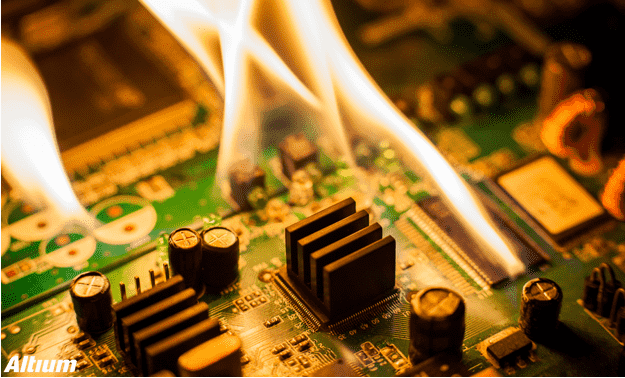About us
FASTPCBA Co.,Ltd
-
 Building 1, Senyang Electronic Technology Park, Guangming High-tech Park, Yutang Street, Guangming District, Shenzhen City.
Building 1, Senyang Electronic Technology Park, Guangming High-tech Park, Yutang Street, Guangming District, Shenzhen City.
-
 F:86-13418481618
F:86-13418481618
-
 pcba13@fastpcba.cn
pcba13@fastpcba.cn
 date:2019-06-26 14:00:00
date:2019-06-26 14:00:00
About the thermal design of PCBA
PCBA welding uses hot air reflow soldering, which relies on the convection of the wind and the conduction of PCBs, welding pads, and leads. Due to the different thermal capacity of the welding pads, the leads, and the different heating conditions, the pads and pins are heated to different temperatures at the same time during the reflow soldering process. If this temperature difference is relatively large, it may cause poor soldering, such as open soldering and rope suction of QFP pins; tombstoning and shifting of chip components; shrinkage fracture of BGA solder joints. In a similar way, we can solve some problems by changing the heat capacity.

PCBA processing
(1) Thermal design of the heat sink welding pad.
In the soldering of the heat sink elements, the phenomenon of less tin on the heat sink pad is encountered, which is a typical application that can be improved by the heat sink design.
For the above situation, the design can be designed by increasing the heat capacity of the heat sink. Connecting the vent to the inner ground plane. If the ground plane is less than 6 layers, separate the heat sink from the signal layer and reduce the aperture to the smallest available aperture size.
(2) Thermal design of high power grounding insert holes.
In some special product designs, the insert holes sometimes need to be connected to multiple ground/electric plane layers. Because the contact time between the pin and the tin wave during the wave soldering is very short, the soldering time is very short, often 2~3s. If the heat capacity of the insert holes is relatively large, the temperature of the lead may not meet the soldering requirements, forming a cold solder joint.
In order to avoid this, a design called a star-moon hole is often used to separate the solder hole from the ground/electric layer, and a large current is passed through the power hole.
(3) Thermal design of BGA solder joints.
Under the mixed craft conditions, there will be a unique phenomenon of "shrinkage fracture" caused by single direction solidification of the solder joint. The root cause of the defect is the characteristics of the hybrid craft itself, but it can be routed through the BGA corner to optimize the design to make it slower and improve.
According to the experience provided by the case, the solder joints where shrinkage fracture generally occurs are located at the corners of the BGA. By increasing the heat capacity of the BGA corner solder joints or reducing the heat transfer speed, it can be synchronized with other solder joints or post-cooled. Therefore, it is prevented from being broken under the BGA warping stress due to the first cooling.
(4) Design of chip component welding pads.
As the size of the chip components becomes smaller and smaller, there are more and more phenomena such as shifting, tombstoning, and flipping. The occurrence of these phenomena is related to many factors, but the thermal design of the pads is one of the more influential aspects.
If one end of the welding pad is connected to a relatively wide wire and the other end is connected to a relatively narrow wire, the heating conditions on both sides are different. Generally, the pad connected to the wide wire will melt firstly (this is contrary to the general expectation). It is generally believed that the pad connected to the wide wire is melted due to the large heat capacity. In fact, the wide wire becomes a heat source, which is related to the heating mode of the PCBA. The surface tension generated by the first melted end may also shift the component or even flip.
The effect of wave soldering on the component surface.
1.BGAO
Most of the BGA pins with a center-to-center distance of 0.8mm and above 0.8mm are connected to the circuit layer through vias. During wave soldering, heat is transferred to the BGA pads on the component surface through the vias. Due to different heat capacity, some are not melted, some are semi-melted, and are easily broken under thermal stress.
2.Chip capacitor.
Chip capacitors are very sensitive to stress and are susceptible to mechanical and thermal stresses to crack. With the widespread use of tray-selected wave soldering, chip components at the border of the tray window are susceptible to breakage due to thermal stress.
 Building 1, Senyang Electronic Technology Park, Guangming High-tech Park, Yutang Street, Guangming District, Shenzhen City.
Building 1, Senyang Electronic Technology Park, Guangming High-tech Park, Yutang Street, Guangming District, Shenzhen City.
 F:86-13418481618
F:86-13418481618
 pcba13@fastpcba.cn
pcba13@fastpcba.cn